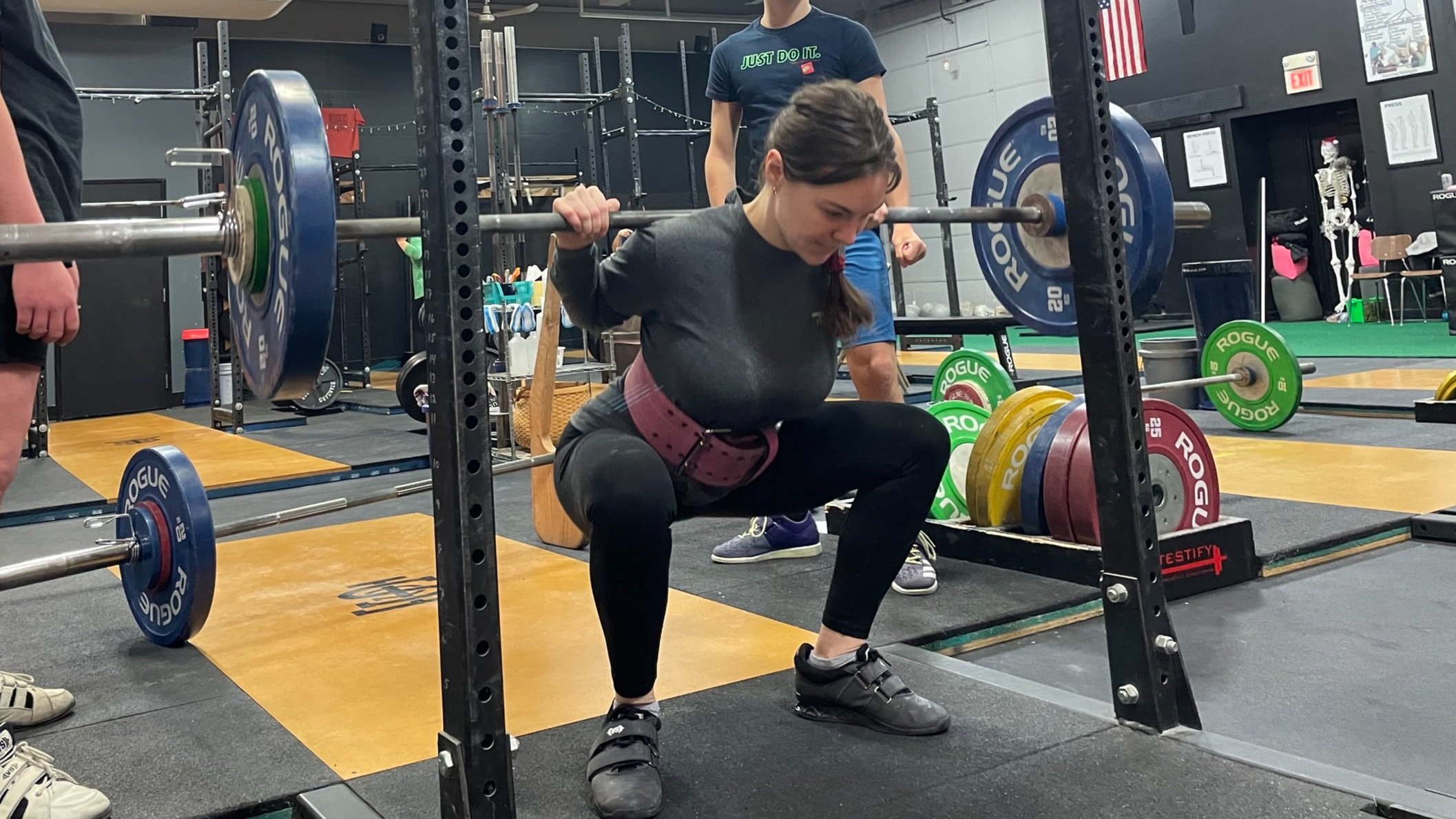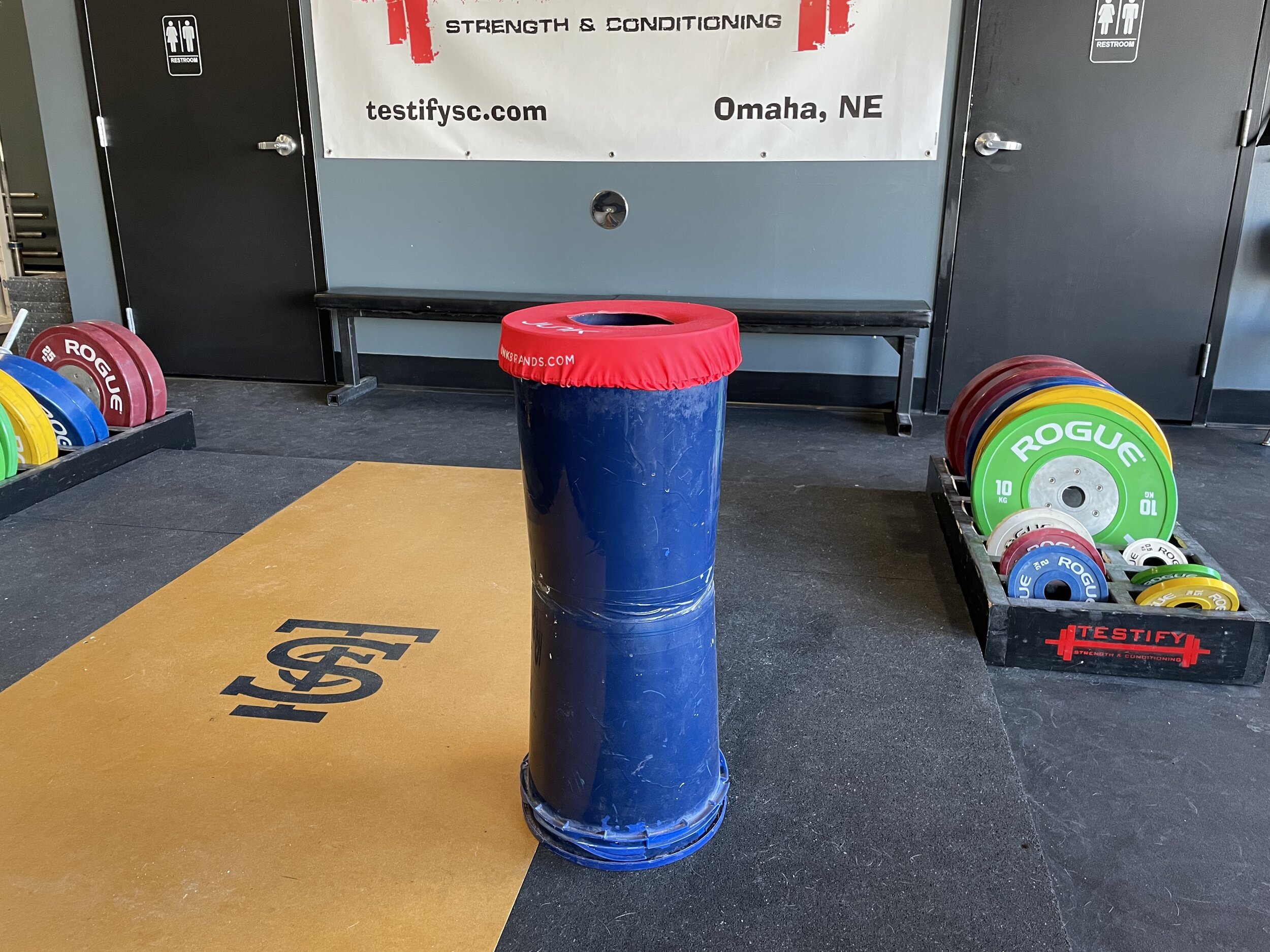The Best Way to Put On a Lifting Belt! (and a secret weapon)
/A lifting belt is an extremely useful tool for your strength training, and within a month or two of starting to train, you should be using one regularly. Putting on a lifting belt, however, can be a bit tricky, so let’s sort this out.
How to Do It
There is one way - that’s right, just one - to put on a belt correctly, and it involves the upright of your squat rack. The photos here show a double-prong belt in use, but the method works just as well for single prong belts (in fact, it’s slightly easier). The steps are below, and to learn it even quicker and better, watch the included video.
Put the nose of your belt through the buckle and wrap the nose of the belt around the upright.
Lean away from the upright. Be sure to lean away so that your hips move away from the rack as well (Figure 1); don’t lean away like you’re trying to avoid a punch (Figure 2).
Twist your body away from the rack. For example, if the nose of the belt came around the right side of your body, twist to your left (Figure 3). This will tighten up the belt.
Put the prong(s) through the appropriate hole(s).
Taking off the belt is much the same as putting it on - wrap the nose around the rack, lean away, twist to loosen, and then remove the prong(s).
Squat Stands vs Squat Racks
If you have a squat stand (free-standing, two uprights) instead of a squat rack (anchored to the floor, four uprights), it may tip toward you when you lean away. This is bad. However, it’s an easy problem to solve. Simply place your foot down on the far side of the floor support, and you’ll be able to keep the squat stand anchored in place.
Secret Weapon
I told you there’s only one way to put on a belt, and this is true . . . mostly. If you’re at a meet, you might not have a squat rack handy when you’re about to step on the competition platform. Oh, you’ll have plenty of racks in the warm-up room, but there will quite possibly be none near the competition platform. Here’s what you do (and again, watch the video above to see this in action):
Put the nose of your belt through the buckle.
Place the sharp end of the screwdriver through one of the holes of the belt (Figure 4).
Grab that end of the screwdriver (don’t impale yourself), and pull back, treating the screwdriver as a lever (Figure 5). This will get the belt as tight as you like.
How Tight Should Your Belt Be?
When you’re new to wearing a lifting belt, it should be uncomfortably tight. If it’s comfortable to wear and easy to wiggle around, it’s merely a fashion accessory. Don’t let your belt be a fashion accessory. With practice, what was uncomfortably tight at the beginning will simply feel correct.
Need to Buy a Belt? Watch This First.
If you’re getting ready to buy a lifting belt, I’d recommend watching the included video here to get a good sense of what to look for when purchasing one. You’ll also find some links below to a few belts we recommend to our members.
Belts
My belt is from Best Belts, and I’d love to recommend them to you, but as of May 2023, they're backlogged and aren't taking orders, so with that in mind, here are the belt options we typically recommend:
(Some links may be affiliate links. As an Amazon Associate, Testify earns from qualifying purchases.)








